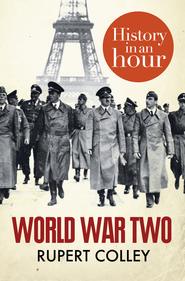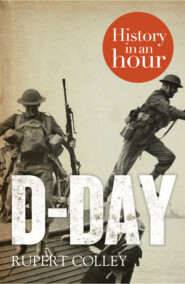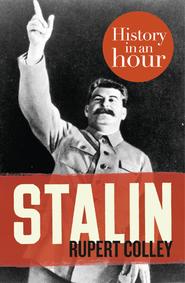По всем вопросам обращайтесь на: info@litportal.ru
(©) 2003-2024.
✖
Black History: History in an Hour
Настройки чтения
Размер шрифта
Высота строк
Поля
Fourteen years after independence, the United States conducted its first national census and found that 757,363, or 19 per cent of the total population, were black. Of these, 697,897, or 92 per cent, were slaves, and 94 per cent of those slaves lived in the Southern states.
A whipped slave, 1863Illustration from Harper’s Weekly
The slave was considered property. They had no civil rights, no rights in the judicial system, no access to education, no say in where or how they lived or worked; they were at the total mercy of their owner. The slave had no more rights than a mule. If an owner whipped or raped a slave, the slave had no recourse to complaint, nor any route to justice.
Slavery existed in all thirteen Southern states, but amongst the Northern states a strong anti-slavery voice arose, led, in the main, by the Quakers, whose opposition was based on moral and religious grounds. In 1780, Pennsylvania, with its strong Quaker influence, became the first state to abolish slavery within its borders, although Vermont, at the time a territory, had abolished slavery three years previously. Massachusetts, North Hampshire, Connecticut, Rhode Island, New York and New Jersey followed suit. By 1804, slavery had been banned in every Northern state. By 1810, there were over 185,000 free African-Americans in the US, virtually all in the North.
The country, barely a quarter of a century old, was firmly split between the North and the South.
The Black Slave:
Three-Fifths the Man
If the abolitionists felt that the tide was turning their way, they were dealt a blow in 1787 with the passing of America’s Constitution. Congress argued at length as to whether slaves should be granted political rights. The Southern states found themselves caught in a dilemma – by constitutionally recognizing the blacks, the inflated population of the Southern states would have given them greater representation and hence greater power in Congress. But the downside was if the slaves were recognized as having constitutional rights then they had to pay tax, which, as they were slaves, their white owners would have to pay on their behalf.
The dilemma was solved by a compromise – the black man was given three-fifths the political rights of the white. Thus, enshrined from the beginning, the American Constitution viewed black as inferior to white.
Cotton picking, c.1870Photograph courtesy of Keystone View Company
The use of slaves towards the end of the eighteenth century was on the decline until 1793, when Eli Whitney introduced his ‘cotton engine’ or cotton gin. By mechanically separating the cotton fibre from the seeds, it revolutionized the manufacturing process of cotton on an industrial scale. Responding to the demands of the expanding textile industry in Great Britain, the farming of cotton expanded across the Southern states. In 1790, the South had exported 3,000 bales of cotton. By 1810, with the cotton gin in place, this had increased to 180,000 bales, and half a century later, in 1860, to over 4.5 million bales. But it still needed the manpower to grow and pick the cotton, and so the need for slaves became ever more acute.
In Great Britain, black people congregated around the ports attached to the slave trade. In London, by about 1760, between 3 and 6 per cent or at least 20,000 London residents were black.
In 1772, lawyers representing James Somersett, an escaped slave, argued that his subsequent recapture and imprisonment was illegal. Lord Mansfield, presiding over the case, found in favour of Somersett, thereby abolishing slavery within England and Wales. Six years later, the ruling was extended to Scotland. Mansfield’s decision immediately freed about 15,000 slaves, mostly domestic servants, although many, without alternative means, remained with their masters as paid employees.
Olaudah Equiano, a former slave who had bought his freedom, settled in England, moved in influential circles, and in 1789 published his memories. Entitled The Interesting Narratives of the Life of Olaudah Equiano, the book and its harsh depictions of Equiano’s former life did much to advance the abolitionist cause in England.
Following the American Revolution, many Black Loyalists, the slave-soldiers who had fought on the side of the British, arrived in London, further increasing the black population within Britain. In 1786, a special ‘Committee for the Relief of the Black Poor’ laid plans for the resettlement of blacks to Sierra Leone in West Africa. Four hundred ‘Black Poor’ successfully made the trip, and once there, established a colony. The Creole people of Sierra Leone, an ethnic group whose culture is based on Western culture, are descendants of the Black Poor. But this attempt to restrict the number of blacks in Britain would not last long, and the aftermath of the Napoleonic wars of the early nineteenth century saw another influx of black soldiers and seamen settle in London.
In Britain, the Society for the Abolition of the Slave Trade was formed in 1787. It used, among its many forms of agitation, boycotts, petitions, leaflets and flyers. It would take twenty years but its efforts were duly rewarded when, in 1807, Parliament passed the Act for the Abolition of the Slave Trade. British seamen who persisted with the trade were, if caught, liable to a fine of £100 for every slave found aboard ship. The Royal Navy set up a squadron whose task was to patrol the coast of West Africa capturing ships carrying slaves. Captains on the slave ships, realizing they were about to be caught, would throw slaves overboard to reduce the fines they had to pay. However, within half a century, the Royal Navy had captured 1,600 slave ships and freed 150,000 Africans in the process.
Great Britain, having abolished the slave trade in 1807, went further when, in August 1834, it abolished slavery altogether throughout the British Empire. The tireless William Wilberforce had been at the head of the twenty-year campaign and Britain became the third nation (after Denmark and Norway in 1803) to ban the slave trade outright. Slave owners were handsomely compensated (£20 million having been put aside for reparation) and were permitted to retain their former slaves as ‘apprentices’ for a further six years. The former slaves themselves, however, were offered no compensation.
Poster advertising the selling of ‘valuable young negroes’, c.1840
On 1 January 1808, a year after Britain had abolished the slave trade, the US followed suit. Cuba and Brazil were to continue importing slaves for another half-century, but in Britain and America, at least, the trade had come to an end.
But across the Atlantic in America, if the Northern states thought the act would ring the death knell for slavery, they were proved wrong. The Southern states had already reduced the number of slaves imported from the African continent in the belief that they brought in disease that could infect their existing slaves. Also, the South, by encouraging a greater birth rate, now had a steady supply of new slaves. Many died in infancy, but despite the abolition of the slave trade in 1808, the number of slaves in the US rose from 1 million in 1800 to 4 million in 1860. Slaves accounted for one-seventh of the national population, but made up a third of the population in many of the Southern states. Children born to a black mother and a white slave-owning father retained their mother’s status, so the South saw an increasing number of ‘mulatto’ slaves. The act had the unfortunate side effect of rendering the existing slaves that much more valuable. A slave that could be bought for $50 in 1800 cost $1,000 in 1850. The increasing value of slaves also meant that old slaves that may have been retired were made to work longer.
In 1822, an organization called the American Colonization Society founded a new colony, Liberia, on the west coast of Africa. Colonized by freed American slaves and declared independent in 1847, Liberia means liberty, and the country’s motto is ‘The love of liberty brought us here’. The flag is a one-star variation on the stars and stripes and the capital, Monrovia, was named after James Monroe, president of the United States between 1817 and 1825. Liberia, it was felt, offered a safer option for the freed slave than remaining in America. But for many born in the US, they preferred to run the gauntlet of discrimination and remain in the nation of their birth.
North and South:
‘If slavery is not wrong, nothing is wrong’
Only one in four Southern families owned a slave, but the whole economy and society was based on slavery and the fear of insurrection was constant. There are on record over 250 known incidences of revolt. Denmark Vesey, a freed slave, spent years planning a huge insurrection and had attracted almost 5,000 African-Americans to his cause. But in 1822, Vesey was found out, captured and executed, along with his ringleaders.
In 1831 in Virginia, Nat Turner, a slave who had learnt to read and write and who had turned to Christianity, believed that God had ordered him to slay his enemies. A solar eclipse in mid-August 1831 convinced Turner of the necessity and timing and on 21 August he killed his master and his master’s family. Leading a gang of trusted slaves, Turner led an orgy of killing that lasted twenty-four hours before troops took control. In retaliation, local whites killed over 100 slaves at random. Turner, having eluded capture until 30 October, was tried, convicted and executed. Laws were subsequently passed to restrict the education of slaves.
Harriet Tubman (far left) with rescued slaves, c.1885
Many escaped slaves fled to the North and sometimes on to Canada via an escape route known as the Underground Railroad. The railroad consisted of a series of safe houses, transport facilities and guides to help the runaways escape. Between 1830 and 1860 the railroad helped over 3,000 slaves to freedom and safety. Its most famous organizer, Harriet Tubman (pictured above with some rescued slaves), went on to become a Union spy during the civil war.
The population of the US was growing at an incredible rate: from 7.2 million in 1810 to almost 10 million a decade later. By 1860 this had increased threefold to over 30 million, and New York had become the third largest city in the world (behind London and Paris). The increasing birth rate contributed, but it was mainly immigration, particularly from Ireland and Germany, people attracted by the vast tracts of land available in the west, that caused the dramatic rise. Conflicts arose with the Native Indians, but the expansion westwards was inevitable.
As the white population expanded, newly settled areas, or territories, asked to be admitted into the Union. To maintain the balance between slave states and free states, territories were admitted two at a time. By 1819, the United States was comprised of twenty-two states, eleven free states from the North, and eleven slave states from the South.
This informal arrangement became policy following the Missouri Compromise of 1820. In 1820, Missouri petitioned to be admitted into the Union as a slave state, despite its proximity to free states. Senator Henry Clay suggested allowing Missouri in as a slave state but to maintain the 50/50 ratio, to admit Maine as a free state. More significantly, the Compromise stated that, with the exception of Missouri, no new state containing slavery would be allowed above the line of 36 degrees 30 minutes.
Whilst the Southern states tried to paint a paternalistic and benevolent picture of the relationship between master and slave, the anti-slavery movement of the North, inspired by Britain’s lead in 1834, continued to press for total abolition. In 1847 Frederick Douglass, a slave who had escaped and won his freedom, began the weekly abolitionist newspaper, the North Star. In May 1851, Sojourner Truth, a freed slave, delivered her influential ‘Ain’t I a Woman?’ speech at a women’s rights convention in Akron, Ohio, in which she compared herself to white women, who were accorded respect, and asked why the same was not the case for black women. In 1852, Harriet Beecher Stowe published the influential Uncle Tom’s Cabin which portrayed, in dramatic fashion, the life of the slave in the American South.
But in 1857, the abolitionist cause was dealt a severe blow following the verdict of the Dred Scott case. Scott, a slave from Missouri, tried to sue his owner on the grounds that he had lived with him in Illinois, a state where slavery had been outlawed. The US Supreme Court ruled that blacks were not eligible as US citizens therefore had no recourse to the US legal system. Furthermore, a slave did not become free merely by entering a free state. A Negro, in short, had no more legal rights than an ass.
In 1860, Abraham Lincoln (pictured below) was elected the sixteenth US president, representing the newly formed Republican Party, a party established by the anti-slavery lobby. Lincoln took up his post saying, ‘I believe this government cannot endure permanently half slave and half free.’ Lincoln described himself as ‘naturally anti-slavery.’ ‘If slavery is not wrong,’ he wrote in a letter in April 1864, ‘nothing is wrong.’
Abraham Lincoln, 1865Photograph by Henry F. Warren
Lincoln’s electoral success convinced the South that the days of slavery were numbered. On 20 December 1860, South Carolina formally withdrew, or seceded, from the Union of the United States. Within seven weeks, six more states had seceded and together they formed the Confederate States of America, also known as the Confederacy, with Jefferson Davis as its president. Once the civil war had started, on 12 April 1861, another four states followed suit.
War and Emancipation:
‘Previous condition of servitude’
Slavery may have been the cause of the civil war but Lincoln did not go to war specifically for the benefit of the slave. Instead, his ‘paramount’ objective was to save the Union: ‘If I could save the Union,’ he wrote in 1862, ‘without freeing any slave I would do it, and if I could save it by freeing all the slaves I would do it; and if I could save it by freeing some and leaving others alone I would also do that.’
Many slaves fled from their masters, emigrated north and joined the Union army, but Lincoln, mindful not to upset the border states between North and South, was initially reluctant to enlist blacks. In late 1862, however, he relented and through the Militia Act permitted African-Americans into the Union army.
In September 1862, Lincoln issued the Emancipation Proclamation which stated that as from 1 January 1863, all slaves in the Confederate States (but not the border states) would be free. Southern slave owners ignored the proclamation, but nonetheless, at the turn of the New Year, thousands of slaves fled to the Union, and cities like New York were suddenly overwhelmed with African-Americans. Much of the white population in the North resented having to fight for the benefit of blacks who then engulfed their cities, threatening their livelihoods by offering cheaper labour. As New York and other Northern cities descended into race riots, Lincoln prepared to end slavery throughout the country.
In his Gettysburg Address in November 1863, Lincoln talked of the need to preserve a ‘nation conceived in liberty and dedicated to the proposition that all men are created equal’.
In April 1865, after four years of civil war, the Union emerged victorious. At the end of the war, there were 185,000 blacks in the Union army, and around twenty black soldiers had received the Congressional Medal of Honour. But Lincoln was still concerned that emancipation did not cover the whole nation and that the former Confederate States might see it as merely a temporary measure of war. Therefore, on 6 December 1865, ten months after its proposal and following the Union’s victory, the Thirteenth Amendment to the US Constitution was ratified: ‘Neither slavery nor involuntary servitude shall exist within the United States, or any place subject to their jurisdiction.’ Slavery, this peculiar institution, had finally been abolished.
Lincoln put together a plan to aid the economic and political recovery of the South and to help the 4 million former slaves as they adapted to their new lives as ‘freedmen’. In March 1865, during the last weeks of the war, Lincoln had set up an agency, the Freedman’s Bureau, whose purpose was to aid the freedmen. The task, once the war was over, was immense. The freed slaves needed, at the most basic level, food, provisions and shelter, and, for the wounded soldiers, medical supplies. But it was the longer-term objectives that proved so difficult in the immediate post-war years of Reconstruction – the renting of land, access to education, and laying the foundations for the rebuilding of lives.
Вы ознакомились с фрагментом книги.
Приобретайте полный текст книги у нашего партнера:
Приобретайте полный текст книги у нашего партнера:











